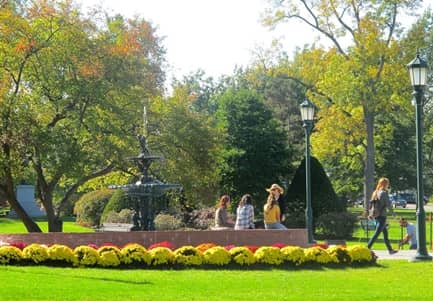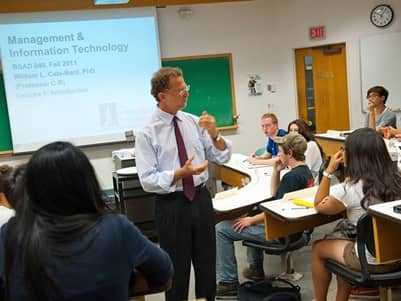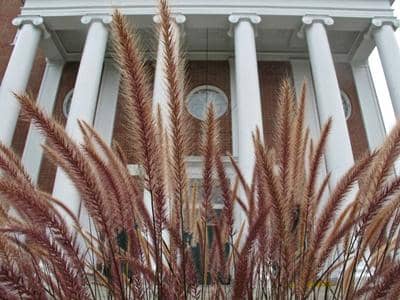University of Vermont
Burlington, Vermont
The University of Vermont provides a mixture of big–school opportunities and small-school benefits. Students enjoy collaborating with their professors while growing into successful leaders of tomorrow.
Get to know University of Vermont
College Highlights
STUDY ABROAD
iAbroad is UVM’s research tool that helps students navigate their options to study abroad. Those interested in study abroad are required to complete four steps prior to departure.
- Inquiry Phase: During this step, students activate their iAbroad account and begin the search process for programs. Students should begin the inquiry phase approximately 12-15 months before the program begins. This gives students ample time to perform the necessary research and make an informed decision.
- Apply Phase: This is not the study abroad application itself, but a guide to applying to programs.
- Conditional Acceptance Phase: Once a student has been accepted to a program, they must have their Course Selection Approval Form validated by various departments and offices.
- Pre-Departure Phase: Students attend a pre-departure orientation prior to going abroad.
UVM BILATERAL EXCHANGE
UVM takes part in various exchange programs all around the world, allowing students to study abroad at partner institutions while an international student from those schools come to study at UVM. This program is a balance of domestic and international education, altogether giving students the opportunity to continue their studies within their discipline at world-class institutions.
The following list details the current program options available:
Aoyama Gakuin University (Tokyo, Japan); University of Augsburg (Augsburg, Germany); Cardiff University (Cardiff, Wales); University College Dublin (Dublin, Ireland); Edith Cowan University (Perth, Australia); ICN Business School (Nancy, France); Kansai Gaidai (Hirakata, Japan); University of Lapland (Rovaniemi, Finland); Universidad Panamericana (Guadalajara, Mexico); Universidad de León (León, Spain); University of Newcastle upon Tyne (Newcastle upon Tyne, UK); Stockholm University (Stockholm, Sweden); University of Sussex (Brighton, England); University of Western Australia (Perth, Australia); Wirtschaftsuniversität Wien (Vienna, Austria); Yaroslavl State University (Yaroslavl Russia)
ENROLLMENT BY ETHNICITY
Non-U.S. Citizen: 3%
Hispanic/Latinx: 5%
Black or African American, non-Hispanic: 1%
White, non-Hispanic: 82%
Native/Indigenous American or Alaska Native, non-Hispanic: 0%
Asian, non-Hispanic: 3%
Native Hawaiian or other Pacific Islander, non-Hispanic: 0%
Two or more races, non-Hispanic: 3%
Race and/or ethnicity unknown: 3%
FIRST-YEAR EXPERIENCE
UVM’s first-year experience (FYE) is specific to the College of Arts and Sciences. In their first year, students are introduced to university life through various learning communities and social activities. The FYE is a combination of Teacher-Advisor Program (TAP) seminars and larger courses. TAP is an elective course with a strong focus on writing. Students enrolled in TAP take part in small group seminars, where they discuss topics of interests and explore multiple viewpoints.
DEAN’S SIGNATURE FULL-YEAR INTEGRATED PROGRAMS
Aside from the semester-long TAP seminars, UVM offers 4 full-year residential programs. Students enrolled in a year-long program take 4-6 connected courses that are taught by faculty from different departments. Participation in a full-year course is highly beneficial, as students get to explore topics highly in depth as they discover their talents and interests.
FIRST-YEAR SUMMER READ
UVM requires all incoming freshmen to complete a summer reading assignment prior to arriving on campus. The book’s themes are integrated into the first-year experience, and students from all disciplines are expected to contribute. In the fall, the author visits campus to give a free lecture and book signing.
FIGS
First-year interest groups, or FIGs, allow students to live among peers who share similar interests and academic schedules. A FIG takes the learning experience outside of the classroom and integrates it into residence life, allowing students to get the most out of their majors from the very beginning of their college lives. For example, UVM offers BioFIG for first-year biology, biological science, zoology, and plant biology students. BioFIG allows students to take classes with one another and participate in a weekly seminar, which is incredibly important for developing peer collaboration and supplementary course discussion.
RESIDENTIAL LEARNING COMMUNITIES
UVM students are given the chance to live with like-minded peers of all interests. Through residential learning communities, they foster their passions in environments that enrich and challenge them to grow.
The Arts Initiative: The Arts Initiative combines visual and performing arts students into one collaborative, residential environment. Students enrolled in this community explore career options and personal passions through various programming and activities. There is an awesome opportunity in the spring semester for students to take Exploring Art and Culture through the Fleming Museum. This optional course allows students access to museum exhibitions and resources. Students learn how to research and discuss the relationship between art and culture. The semester ends with a student-organized exhibit.
Dewey House for Community Engagement: The Dewey House is great for students seeking to make a change in the community. Members of the house are given leadership opportunities and access to community service resources. One of the greatest benefits to participation is Dewey’s connection to UVM’s Community Service Scholars Program (CSSP). Through this relationship, students can take part in a 4-year learning experience that culminates with the designation of a Community Service Scholar at graduation.
The Global Village: Global Village explores topics of culture, study abroad, and the global society. The village is broken up into different houses, but the themes of an interconnected society and cultural tolerance remain consistent throughout all the residences. The houses available include: Africa House; Canada House; Caribbean House; Casa Italiana; Chinese House; German House; Japanese House; La Maison Francaise; Multinational Sports House; Russian House; Spanish House.
GreenHouse Residential Learning Community: GreenHouse is home to nearly 200 students that share a passion for smart environmental practices and sustainability. Students in this community explore topics of ecological responsibility and social justice. GreenHouse is not meant to conflict with coursework, so most of the events are held on the weekends or evenings. This is to ensure that students from all disciplines are able to join if they are interested.
Health & Wellness: The Health & Wellness community promotes all aspects of a heathy lifestyle. Students enrolled in this program explore what it means to lead a balanced life, both in and out of the classroom. There are approximately 140 students in this community, and interests range from local food to exercise. The Health & Wellness RLC promotes engagement among students through various activities and social events. And participants benefit from student-faculty collaboration and discussion.
WE: The Wellness Environment (WE) approaches health from four directions: fitness, nutrition, mindfulness, and mentorship. Courses within this RLC cover mental and physical well-being, as well as tips to maintaining a healthy lifestyle. There are countless benefits to participation. WE students have access to nutrition and fitness coaching, yoga and tai chi programs, and campus resources. The WE environment is a substance-free zone, and every member is expected to observe and respect this rule.
SERVICE LEARNING
The Office of Community-University Partnerships & Service Learning (CUPS) is responsible for community-based learning initiatives. Service learning is considered a high-impact practice that involves students directly with the community. Students are given the chance to integrate academic theories into real-world situations, allowing for higher-level conceptualization and application of subject matter. There are plenty of different options available. UVM supports direct and indirect service, consulting, and community-based research.
There are 91 service learning courses offered at UVM, so there are plenty of ways to get involved. The university collaborates with 200 community partners, 90% of which have reported satisfaction with the UVM’s service. Examples of courses available include: Sustainable Development in Small Island States; Critical Perspectives on Service Learning and Communication; Intro to Early Childhood Education; Sustainable Food Purchasing; Community and International Economy Transformation
Admission
TEST SCORES
Optional
FRESHMAN PROFILE
SAT Evidence-Based Reading and Writing
25th Percentile: 590 | 75th Percentile: 680
SAT Math
25th Percentile: 570 | 75th Percentile: 670
ACT Composite
25th Percentile: 26 | 75th Percentile: 31
ACT Math
25th Percentile: 24 | 75th Percentile: 29
ACT English
25th Percentile: 25 | 75th Percentile: 33
Tuition & Cost
Tuition (in-state): $16,392
Tuition (out-of-state): $41,280
Fees: $2,670
Room: $8,786
Board: $4,568
Contact University of Vermont
Contact Admissions
www.uvm.edu/admissions
(802) 656-3370
admissions@uvm.edu
Campus Location
Visit The University of Vermont Online


